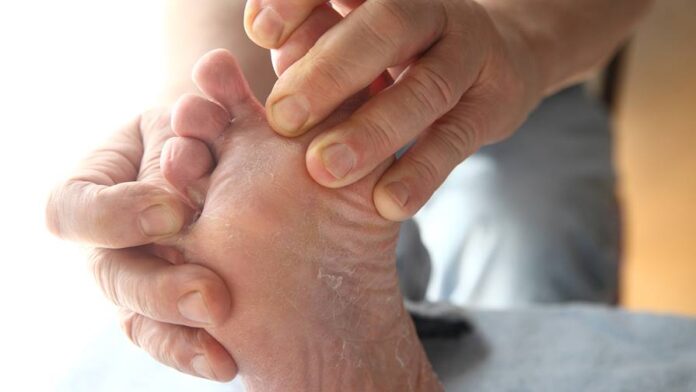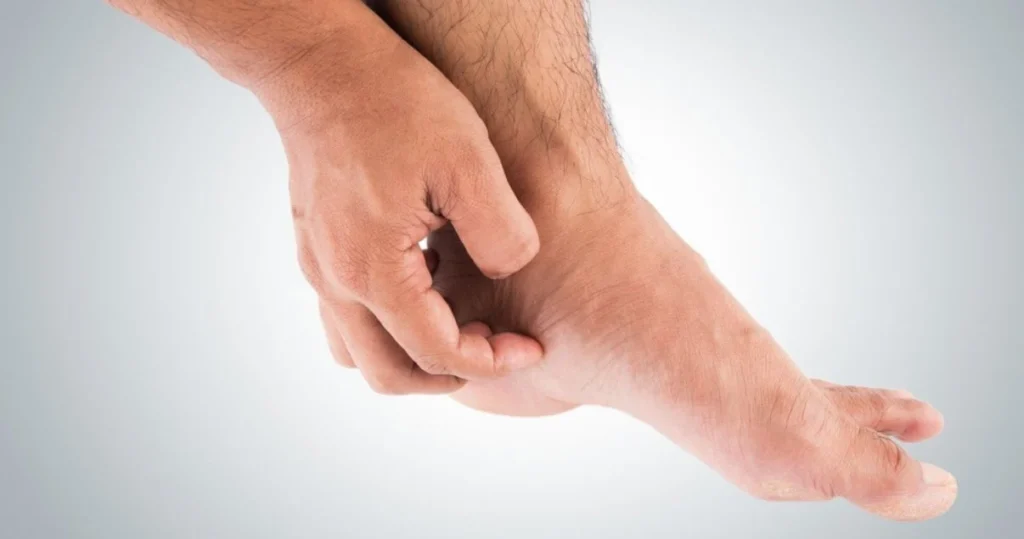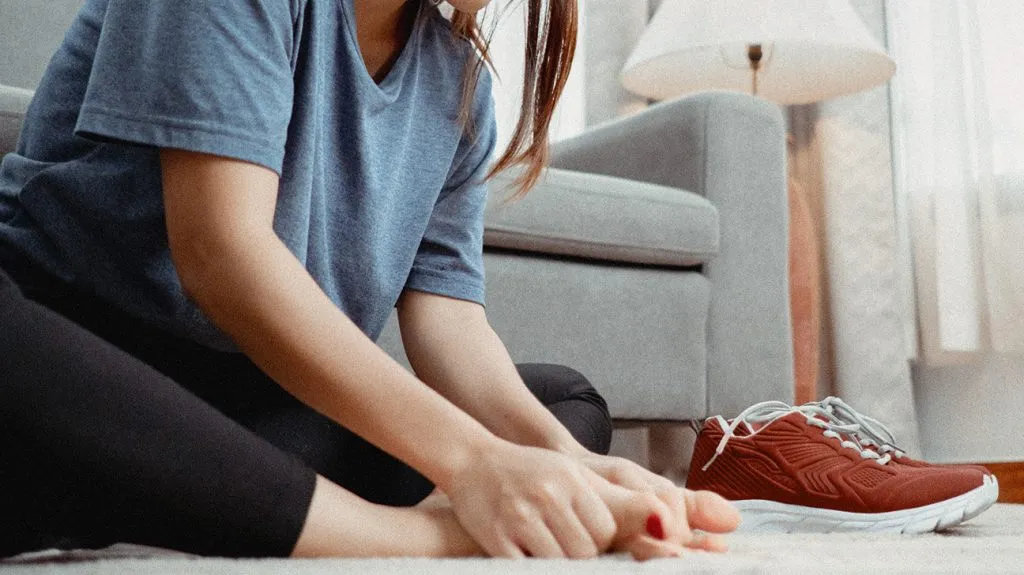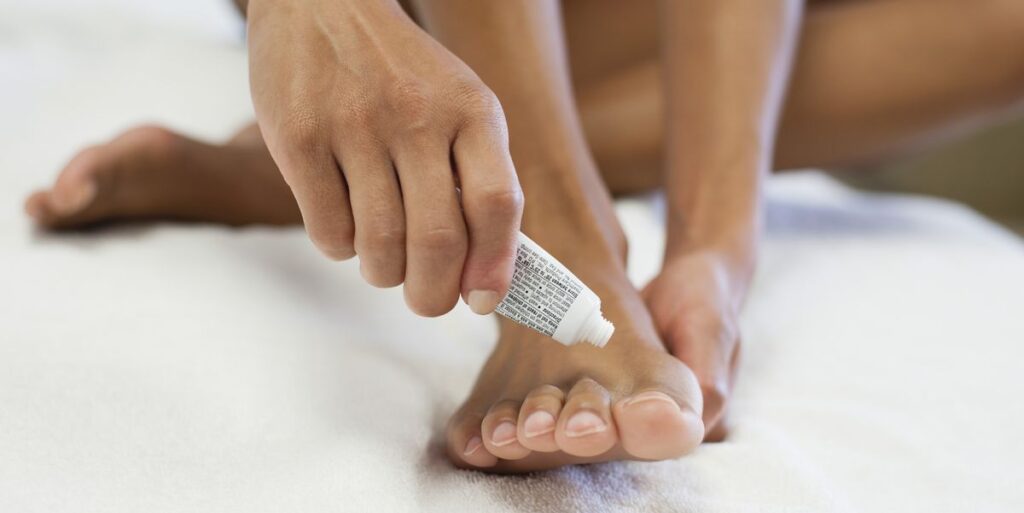
Athlete’s foot is a contagious fungal skin infection that usually begins between the toes but can spread to the toenails and hands. It commonly occurs in an individual whose feet have become sweaty while confined within tight-fitting shoes. Athlete’s foot is not a serious problem, but it can be hard to cure, especially if you have diabetes or a weakened immune system. If you suspect you have athlete’s foot, visit your Foot and Ankle Specialists doctor immediately.
Symptoms of athlete’s foot

There are many possible symptoms of athlete’s foot, and they can occur in one or both feet. The symptoms include:
- Burning or stinging between your toes or on the soles of your feet
- Peeling, cracked, or scaly skin between the toes
- Itchy blisters on your feet
- Thick, discolored, and crumbly toenails
- Itchiness, especially after taking off your shoes and sock
- Inflammation; your skin may appear reddish, grayish, or purplish, depending on your skin color.
See your doctor if these symptoms don’t improve within two weeks of using an over-the-counter antifungal product. You should also see your doctor if you have diabetes and suspect that you have athlete’s foot. Seek medical attention if you have signs of an infection, including fever, pus, and swelling of the affected area.
What causes athlete’s foot?
Athlete’s foot occurs when fungi grow on your feet; this is the same type of fungi that causes ringworm and jock itch. The fungus thrives in warm, humid conditions like damp socks and shoes. The athlete’s foot is contagious and can be spread through contact with an infected person or contaminated surfaces. The fungus is commonly found around swimming pools, showers, and locker room floors. You can also spread the fungus from the affected foot to other body parts when you scratch or pick the infected area.
Risk factors for athlete’s foot

Anyone can get athlete’s foot, but your risk is higher if you visit public places barefoot, especially showers, locker rooms, and swimming pools. Sharing socks, towels, and shoes with an infected person also increases your risk of this skin infection. Your risk is also higher if you have sweaty feet or you keep your feet wet for long periods.
The athlete’s foot can spread to other warm, moist body parts when left unresolved. It can spread from the feet to the groin since the fungus can spread through hands or a towel. Sometimes, an athlete’s foot can cause bacterial infections.
How can I prevent athlete’s foot?

There are various ways to prevent athlete’s foot including:
- Change your socks regularly. If your feet get sweaty, change your socks at least once daily. Also, wear moisture-wicking socks such as cotton to keep your feet drier.
- Air your feet out. Instead of wearing closed shoes all day, put on sandals to let your feet air out as much as possible.
- Keep your feet clean. Use warm, soapy water to wash your feet daily and dry them thoroughly, especially between the toes. A medicated foot powder is recommended for individuals prone to athlete’s foot.
If you have questions about an athlete’s foot, consult your healthcare provider at Foot and Ankle Specialists.








